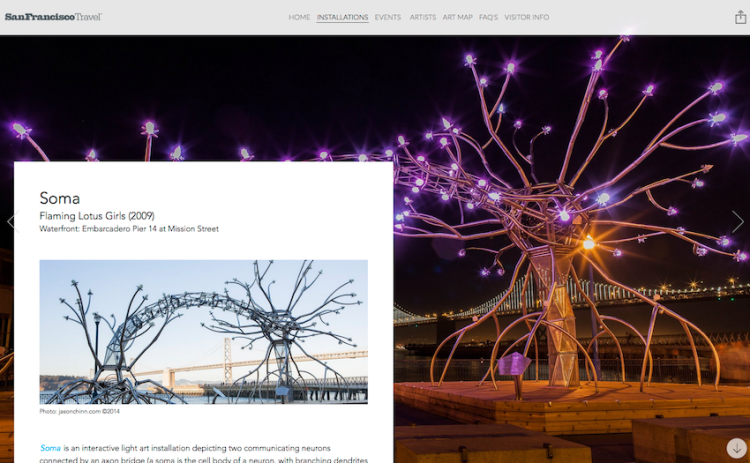When the definitive history of online multimedia storytelling is written, the New York Times’ pioneering Snow Fall article will get its own chapter.
Today, San Francisco-based Storied is launching a public beta of its cloud-based publishing platform, which takes Snow Fall-like storytelling to its next level.
“Anybody can create these things” using Storied, CEO and cofounder Lee Shirani told VentureBeat. He and cofounder Ramin Hedayatpour have backgrounds working for Sony, Adobe, Hearst, and Google.
“You don’t need a talented development team, and anyone who can use PowerPoint” can create these “app-like content experiences,” Shirani said.
In 2012, the original Snow Fall: The Avalanche at Tunnel Creek told the story of skiers caught in an avalanche. It did so with an immersive magazine layout that elegantly married media with top-rate journalism.
It set a new standard for long-form storytelling on the Web through its use of a magazine-like layout, infinite scroll downs, moving background imagery, and other techniques.
“What’s striking,” wrote Rebecca Greenfield at the time on The Atlantic’s The Wire, “is how smoothly the illustrated tale transitions into even more full-bleed-style graphics that are as gorgeous as they are useful.”
Storied takes Snow Fall to its next incarnation in the age of mobile and social. It is a built-from-the-ground-up mobile-first platform that ports this kind of epic storytelling to mobile devices, and adds other capabilities.
There are, for instance, new interactive widgets for creating things like scrolls of film clips. Publishers can also add a social media layer, and an e-commerce capability allows the user to make purchases while still in the story.
The intention for this kind of buying, Shirani said, is to “capture transactions at the moment of engagement,” so you can purchase that coat as you’re reading about it in a story or a catalog.
During the private beta of the Storied platform, several brands have tried their hand at this kind of immersive storytelling.
Storied pieces have been created by Variety on “Fifty Shades of Grey,” The Hollywood Reporter on “Interstellar”, San Francisco Travel on “Illuminate SF,” and the movie “Black or White.”
The key idea, Shirani said, is to bring “the app experience into the open Web,” so that Storied-created articles, interactive ads, catalogs, or microsites can run on any iOS/Mac, Android, or Windows device through a browser.
Snow Fall, targeted at the desktop, did have a tablet version but it was “more static” than the original, he said.
“We’re trying to [take] the same dynamism that made Snow Fall, and bring it to mobile.”
In addition to mobile, social, e-commerce, and widgets, Storied is designed so that this kind of storytelling can be built “at a fraction of the time and cost” of Snow Fall’s development. The platform utilizes HTML5, JavaScript, CSS3, and the Angular framework, and it reports usage stats. While the pieces run on Storied’s platform, the publishers can feature their own domain.
A subscription starts at $500/month for unlimited story creation, unlimited creators, and a first level of page views. Publishers are charged for additional page views, although one can pay a higher subscription for a higher initial level of views.
Storied also takes a fee for transactions conducted within the platform, which allows users to login via their Twitter or Facebook identities. It’s also possible to do integrations with a publisher’s existing subscription platform, the company said.
Since Snow Fall’s launch, there have been a number of tools offering to make possible similar immersive storytelling, including Creativist, Zeega, and sStory.
Shirani also points to Ceros as a competitor. Storied, he said, is differentiated because its “depth of experience is richer, [and there’s a] toolkit of widgets, analytics,” a mobile-first approach, and the e-commerce layer.
VentureBeat's mission is to be a digital town square for technical decision-makers to gain knowledge about transformative enterprise technology and transact. Learn More


